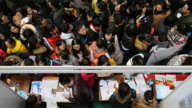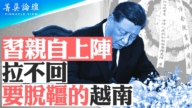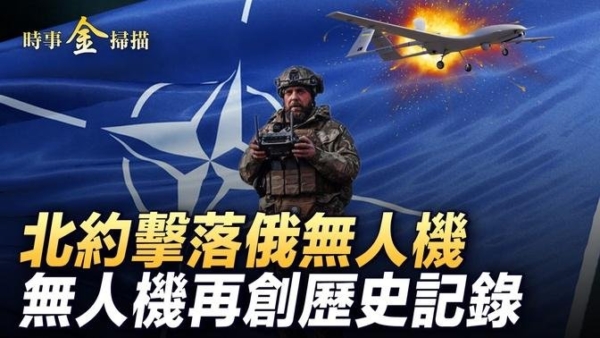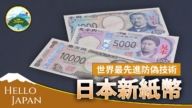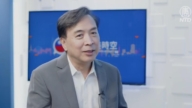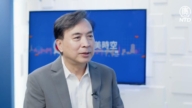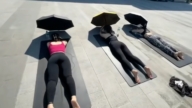【新唐人2015年01月17日訊】近一段時間以來,大陸養老金問題再次成為網路熱門話題,養老金「並軌」政策終於出臺。這意味著近四千萬機關事業單位人員,將告別「免繳費」時代,和企業職工一樣繳納養老金。然而養老金「並軌」後,能否真正的消除「待遇差」?公務員的退休待遇是否會受到影響?機關事業單位的養老金錢從哪來等一系列問題,成為輿論探討的焦點。
據中共官方網站消息,中共國務院1月14號正式對外發佈《關於機關事業單位工作人員養老保險制度改革的決定》(以下簡稱「改革」),文件中明確規定,從2014年10月1號開始,政府機關、事業單位建立與企業相同的基本養老保險制度,實行單位和個人繳費。單位按工資總額的20%繳納養老保險,個人按工資的8%繳納,與企業職工比例相同。
多年來詬病不斷的養老金「雙軌制」終於被明令「廢除」,公務員從不交一分錢就可以拿到相當於退休前工資90%的退休金,變成了和企業職工一樣,要拿出工資的8%繳納養老保險,這是否意味著和企事業職工之間不公平的「待遇差」從此縮小了呢?
眾多專家學者表示,公務員們的退休待遇並不會因此降低,因為政府利用其他方式,「彌補」了公務員個人繳納養老保險的「損失」。第一種公認的「補償」方式就是漲工資。
美國中文雜誌《中國事務》總編輯伍凡:「現在有一批要退休的國家機關的事業單位人員,要先提薪水、提工資,完了再退休。它的目的要保障這些人退休以後的退休金不降低。」
據官方媒體報導,人力資源和社會保障部在對「改革」解讀中明確,養老保險制度改革與完善工資制度同步推進,在實行公務員個人繳費的同時增加工資。因此業內人士普遍認為,這也就意味著,從去年10月1號起個人需要補繳,工資增長也將同時進行,而且很可能增長的幅度還會高於需要補繳的費用。
而早在官方的這份「改革」出臺前,中國人民大學老年學研究所副所長姜向群就曾提出,繳費的同時工資也將上漲。相關人士還透露,漲工資的經費,或將由國家財政和地方財政共同承擔。
伍凡:「這個政權,它們主要保護的是誰?保護中共政權本身。政權本身不是個空架子,政權本身有一大批工作人員,這些工作人員大部分都是共產黨,他們給共產黨賣命一生了,最後走的時候希望有好的待遇,所以共產黨為了要讓政權穩定,讓以後的政府工作人員給它們賣命,那麼要在退休金上面給他們另外的補償,或者一個保障。」
除了漲工資以外,第二種彌補方式,就是「職業年金」。所謂職業年金,是指公職人員的補充養老保險,是一項單位福利制度,由事業單位和職工共同繳費,又被民間稱為「變相福利」。
最新公布的「改革」明確要求,機關事業單位在參加基本養老保險的基礎上,應當為工作人員建立職業年金。單位按本單位工資總額的8%繳費,個人按本人工資的4%繳費。公務員退休後按月領取職業年金。也就是說,並軌之後,機關事業單位的退休金將採取「基本養老金+職業年金」的模式。
有數據顯示,公務員退休後可領到的職業年金,最低可以達到在職工資的20%,而企業職工,則與這項福利無緣。這意味著由於年金的差距,企業與機關事業之間的實際養老待遇,依然十分懸殊。老百姓盼望20年,等到的所謂「並軌」竟然只是「制度並軌」而不是「待遇並軌」。
那麼政府機關、事業單位為公務員繳納的20%基本養老金,加上8%職業年金,資金從哪裏來?當然還是國家財政撥出,也就是花的納稅人的錢。
對此網民們氣憤的質問當局:所謂的「並軌」竟然是納稅人的負擔更重了,不但要承擔公務員的養老金更要承擔職業年金,而普通百姓與公務員的退休待遇差卻更大了,這樣的「取消雙軌」有甚麼意義?
採訪/易如 編輯/張天宇 後製/舒燦
Pension Reform Hides “Dual Treatment”
China’s pension reform will eliminate the dual-track system.
That means 40 million civil servants will lose the exemption
from paying into their retirement funds.
Will the reform really eliminate the benefit gap between
public employees and the corporate employees?
Will the civil servants’ retirement benefit be affected?
How will the civil employee contribute to their pension plan?
These have caused much discussion on the Internet,
and caused concerns to public opinion.
The Communist State Council issued the pension reform
decision on Jan. 14.
Starting from Oct. 1, 2014, government agencies and public
Institutions will conduct the same basic retirement insurance
system and contribution as the corporate one.
That is the public sector and the employees will pay
into the funds respectively.
The employers will contribute 20% while employees
will contribute 8% of their salary to the pension fund.
This reform has finally removed the dual-track pension system
that’s much criticized over the years for the public servants
paying nothing into retirement but receive pensions equivalent
to 90% of their pre-retirement salary.
But, now the reform requires public servants to pay 8%
of their salary into the retirement.
Does that mean the unequal treatment between
the public sector employees and the private industry
employees has been minimized?
Many experts and scholars don’t believe the public servant’s
retirement benefit was reduced.
In fact, the government will compensate the loss
with different means.
A salary raise is generally believed to be the first
means of compensation.
China Affairs magazine editor-in-chief Chris Wu: There will
be salary increases to a number of to be
retired government personnel.
The purpose is to ensure that their pay after retirement
is maintained at the same level.
According to official media reports, the Ministry of Human
Resources and Social Security explained that both pension
reform and wage system improvement will be conducted
at the same time.
This will implement the public servant’s individual
contribution and salary raise.
It is generally believed that while individuals are required
to pay what’s overdue since Oct. 1, the salary
raise will happen.
The growth of salary is also anticipated to be higher
than what is overdue.
Jiang Xiangqun, vice-director of the institute of gerontology,
Renmin University of China, had proposed to increase salary
while contribution is required.
Sources also revealed that funding of increased salary
will be shared by both state and local governments.
Chris Wu: Who does this regime protect?
It is the regime itself.
The regime is filled with a large number of staff,
mostly the Communists.
After devoting themselves to the party for their life time,
they expect good treatment before they leave.
To maintain the stability of the regime so that the following
staff will continue to work for the regime, the retirement
funds will be compensated or guaranteed.
The second make up approach is the occupational pension.
It is a supplementary pension insurance for the civil servants.
This welfare is contributed by the employer and the employee.
It is generally referred as a 『disguised’ welfare.
The pension reform specifically required employer to
contribute to both retirement pension
and occupational pension.
The occupational pension is contributed by the employer
at 8% of the salary and by the employee at 4%.
After retirement, the civil servant will receive
a monthly occupational pension.
That means, after the pension reform, the civil servants’
pensions will include both basic pension
and occupational pension.
It was analyzed that the occupational pension can reach 20%
of the base salary minimum.
But, corporate employees don’t share this benefit.
That means the annuity gap between the private industry
and the public sector is still very big.
The much awaited one pension system for the past 20 years
has finally been realized, but only in the system,
not in the exact treatment.
So where does the budget for 20% contribution to the
retirement pension and the 8% to the occupational
pension come from?
Of course, it is from taxpayers, allocated by the state.
In response, netizens angrily questioned the authority:
the so-called pension reform only causes even heavier burden
on taxpayers, who will pay for the public servants
not just the retirement but also the occupational pension.
The treatment gap between civil servants
and the general public is even bigger.
What’s the point of abolishing the dual-track pension system?
Interview/ YiRu Edit/ Zhang Tianyu Post-Production/ ShuCan










